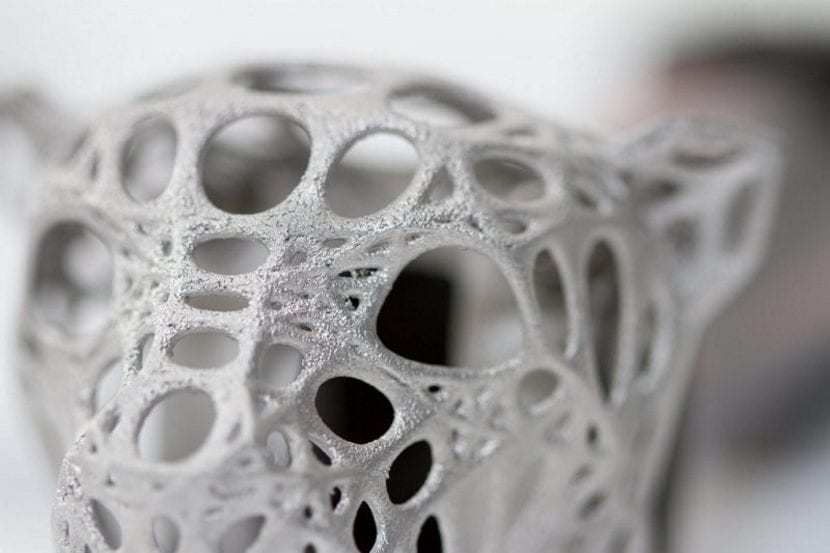
A few years ago, being able to make metal objects in impossible shapes from scratch seemed like science fiction, but 3D printing of metal objects is a reality and in recent months it has become very popular.
We explain how DMLS technology works, direct metal synthesis by laser.
DMLS, 3D Printing of Metal Objects
Dmls is an extremely advanced manufacturing technology that uuses powdered metals as a base. It uses a high power laser for bonding you are selectively particles metallic. This is done layer by layer, with the machine distributing a new layer of metal powder after one layer has been sintered. It's important to put attention on support structures may be required. However, these structures are generated automatically and subsequently will be removed manually. Once the printing is finished, a final heat treatment is carried out.
One of the most suitable metals to use with this technology is the aluminum. The models printed in aluminum have the characteristics of being very strong, precise and they can handle 0.25mm details. Aluminum 3D printing is often used for fully functional parts as well as spare parts, but aluminum is also very suitable for printing jewelries.
Design restrictions
As with other technologies there are some technical restrictions that must be taken into account. The minimum wall thickness that should be 0,5 mm for small surfaces (up to 15mm x 15mm) and at least 1mm for large sections.
Technology Dmls allows a Level of detail very fine, even as small as 0.25 mm. However, for finishes as precise as the embossed or engraved text you have to respect a 0,4mm minimum line thickness, 0,4mm minimum height and 0,15mm minimum depth.
When designing models for 3D printing on aluminum you should think about the geometry of your design. Angular shapes, right angles, and straights can look a bit less attractive compared to free-standing or organic shapes. However, it is better have angles steep over 35 °, because they are likely to have better and smoother surfaces. Angles measuring less than 35 ° and hanging structures tend to have a lower surface quality.
Support structures are necessary to keep your model rigid during printing and to prevent internal stress and warping. If we do not use support structures, walls or ledges with angles below 40 ° they would be in danger of collapsing during the printing process.
If you are curious about how metal objects are printed, but you do not have access to a team of these characteristics, you can always choose send your parts to online printing servicessuch as imaterialize.
More and more websites are specialized in printing with materials and techniques to which we do not have direct access as individuals. This is one good choice so that the maker community can access new production methods but maybe it's something Tsar to use it continuously.